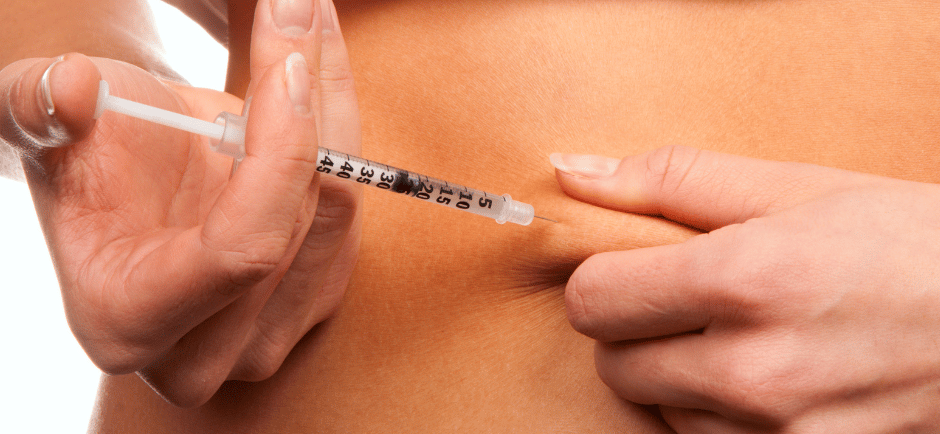
A Comprehensive Guide to Giving Yourself a Subcutaneous Injection
Giving injections at home? This must-read guide shows you how to prepare, inject and stay safe with subcutaneous injections—perfect for managing insulin, hormones and more. Get the confidence, tools and tips to take control of your care like a pro.
Nokuthula Sibanda
7/9/20258 min read


Understanding Subcutaneous Injections
A subcutaneous injection is a method of administering medication into the fatty tissue layer situated just beneath the skin. This delivery route is commonly employed in various medical treatments due to its simplicity and efficacy. During this type of injection, a healthcare provider or the patient themselves will insert a needle into the subcutaneous layer, allowing for gradual absorption of the medication into the bloodstream. Such injections are strategically utilized to achieve a consistent therapeutic effect over a defined period.
Key Takeaways
Subcutaneous injections deliver medication into the fatty tissue beneath your skin, allowing for steady absorption and long-lasting therapeutic effects.
Learning self-injection empowers you to manage chronic conditions independently and confidently at home.
Proper preparation, including site selection, hand hygiene, and correct needle angle, ensures safe and effective medication delivery.
Monitoring the injection site and disposing of sharps safely helps you prevent complications and maintain treatment safety.
Access to training videos, support groups, and healthcare professionals enhances your confidence, reduces anxiety, and improves injection technique.
Subcutaneous injections serve several important purposes in medical treatment. They are often used to administer vaccines, insulin, and certain hormone therapies, among other medications. The reason why certain medications are chosen for subcutaneous delivery is due to their pharmacological properties, which support effective absorption when placed in the fatty tissue rather than muscle or directly into the bloodstream. The fatty tissue is well-vascularized, allowing for a good rate of absorption, but slower than intramuscular injections, making it ideal for medications requiring a gradual release.
Patients may be required to learn how to perform subcutaneous injections in various situations, particularly for chronic diseases such as diabetes or rheumatoid arthritis. For example, individuals with diabetes frequently administer insulin via a subcutaneous route to better manage their blood glucose levels. In such cases, acquiring the skill for self-injection not only empowers patients in their treatment regimen but also simplifies daily healthcare management. Understanding the technique and purpose of subcutaneous injections is crucial for anyone involved in their own or a loved one's health care, ensuring both efficacy and safety in medication administration.
Essential Supplies for Subcutaneous Injections
Administering a subcutaneous injection requires a specific set of supplies to ensure the process is efficient, safe, and effective. One of the primary components is the syringe. When selecting a syringe, consider the volume of medication you need to inject; typically, a syringe with a capacity of 1 mL to 3 mL is suitable for most subcutaneous medications. It is essential to choose a syringe that is appropriate for the viscosity of the medication to avoid complications during the injection.
Next, the choice of needles is critical. Needles come in various gauges and lengths; generally, a 25 to 30 gauge needle for subcutaneous injections is preferred due to its smaller size, which minimizes discomfort. For most patients, a needle length of ½ to 5/8 inches is adequate. It is vital to ensure that the needle is sterile and appropriate for the injection site to promote healing and prevent infections.
Alcohol swabs are another important supply for maintaining hygiene. Before administering the injection, it is essential to clean the skin surface with an alcohol swab to eliminate any bacteria that may cause infections. Allow the skin to dry completely to ensure the effectiveness of the alcohol. Additionally, preparing the medication itself is crucial. Whether in a vial or a pre-filled syringe, ensure that you follow specific guidelines for the medication storage and handling. Some medications may require refrigeration, while others are stable at room temperature.
Finally, it is advisable to have a sharps container for the safe disposal of used syringes and needles. Proper disposal is critical to prevent needle stick injuries and contamination. By gathering these essential supplies and adhering to best practices for their preparation and storage, you can ensure that your subcutaneous injection process is carried out smoothly and safely.
Preparing for the Injection
Before administering a subcutaneous injection, meticulous preparation is crucial to ensure safety and efficacy. The first step in this process is to prioritize hand hygiene. Properly washing hands with soap and water for at least twenty seconds or utilizing an alcohol-based sanitizer significantly reduces the risk of infection. Once hands are clean, it is essential to gather all necessary supplies, including the medication, syringe, alcohol wipes, and a sharps disposal container. This not only promotes a sterile environment but also minimizes the potential for errors during the procedure.
Next, selecting the appropriate site for the injection is fundamental. Common sites for subcutaneous injections include the outer layer of the upper arms, the abdomen, or the thighs. It is advisable to avoid areas with scars, moles, or any uneven surfaces. Identifying a suitable site can enhance the absorption of the medication, thereby maximizing its therapeutic effect. Once the site is chosen, the injection area must be cleaned properly to maintain sterility. Using an alcohol wipe, gently clean the skin in a circular motion, starting from the center of the injection site and moving outward. Allow the area to air dry completely to ensure that the alcohol evaporates, reducing the chances of irritation upon injection.
After preparing the injection site, the next step involves preparing the medication itself. If the medication is in a vial, draw air into the syringe equal to the dosage required. This step is essential, as it prevents a vacuum from forming in the vial. Insert the needle into the vial and push the air in, then invert the vial and draw the medication into the syringe, ensuring that no air bubbles are present. If any bubbles do form, gently tap the syringe to release them. These careful preparation steps are vital for ensuring a safe and successful subcutaneous injection experience.
Administering the Injection
Administering a subcutaneous injection requires careful attention and precision to ensure both safety and effectiveness. Start by gathering all necessary supplies, which include the medication, an appropriate syringe and needle (usually a smaller gauge for subcutaneous injections), alcohol swabs, and a sharps disposal container. Proper preparation is crucial.
Begin by identifying the injection site on your body. Common areas include the outer thigh, abdomen, or the back of the upper arm. Choose a site that has a layer of subcutaneous fat, which is where the medication will be delivered. Clean the area using an alcohol swab to minimize the risk of infection. Allow the skin to dry completely before proceeding.
Next, hold the skin at the injection site between your thumb and forefinger, and pinch up a fold of tissue. This creates a cushion and allows for better access to the subcutaneous layer. Position the needle at a 45 to 90-degree angle, depending on the amount of subcutaneous fat present. For individuals with a higher percentage of body fat, a 90-degree angle may be more suitable.
Once you are ready, insert the needle swiftly to minimize discomfort. After insertion, aspirating—drawing back on the plunger to check for blood—may be necessary to ensure you are not in a blood vessel; however, for many medications, this step is optional. If blood is not drawn, proceed by gently pressing down on the plunger to inject the medication smoothly. It is important to inject at a consistent rate to reduce discomfort.
Upon completion of the injection, withdraw the needle quickly and apply light pressure at the site with a cotton ball to prevent bleeding. Dispose of the needle and syringe safely in the sharps container. This method not only ensures a successful subcutaneous injection but also helps in minimizing discomfort and anxiety during the process.
Post-Injection Care
After administering a subcutaneous injection, proper post-injection care is crucial to ensure your safety and efficiency in managing any side effects that may occur. The first step in the post-injection procedure is to dispose of the needle and syringe correctly. It is essential to place the used needle and syringe into a puncture-resistant sharps container immediately after use. Do not recap the needle, as this increases the risk of needle-stick injuries. Many healthcare facilities provide sharps disposal bins; if you do not have access to one, consult your local guidelines for disposal options.
Next, it is important to monitor the injection site for any signs of adverse reactions. Look for symptoms such as redness, swelling, or tenderness at the site of injection. These may indicate irritation or an allergic reaction that may require medical attention. In some cases, individuals might experience systemic side effects such as nausea, dizziness, or fever, which can also be associated with the medication administered. Keep track of these symptoms, noting their duration and intensity, as this information will be valuable should you need to consult a healthcare professional.
If you notice severe pain at the injection site, experience difficulty breathing, or develop a rash, seeking immediate medical assistance is imperative. Additionally, if any discomfort or symptoms persist beyond a few days, it’s advisable to contact your healthcare provider for further evaluation. Remember that effective management of side effects and timely intervention can significantly improve your experience with subcutaneous injections. Understanding the possible reactions and taking appropriate measures can empower you in your overall healthcare journey.
Common Concerns and Troubleshooting
When it comes to administering subcutaneous injections, individuals often harbor various concerns that can lead to anxiety or hesitation. It is not uncommon to possess a fear of needles; however, understanding the process can alleviate some of that apprehension. Educating oneself about the specific injection process, from preparation to administration, can significantly mitigate fears. For example, deep breathing techniques may help relax the body and mind, making the experience less daunting.
Another common concern revolves around the mechanics of the injection itself. Some individuals may encounter difficulty when attempting to inject the medication. This may stem from improper technique or insufficient knowledge regarding the appropriate angle. It is essential to hold the needle at a 90-degree angle to the skin, ensuring it penetrates the fatty tissue effectively. Additionally, a gentle pinch of the skin can create a more prominent site for the injection, promoting an easier and more efficient administration.
Excessive bruising is another issue that frequently arises during subcutaneous injections. This may occur if the needle is inserted too forcefully, or if it has gone through more tissue layers than intended. Using a new needle for each injection and applying light pressure to the site post-injection can help minimize bruising. In cases where bruising does occur, applying an ice pack before and after the injection may also alleviate symptoms and accelerate healing.
Real-life scenarios illustrate these common concerns effectively. For instance, an individual may successfully overcome the fear of needles by practicing with a dummy or considering their nutritional and medicinal needs, ultimately transforming anxiety into confidence. Similarly, those who have experienced bruising might share their stories, emphasizing the importance of technique and mindfulness during injections.
Resources and Support
Learning to administer subcutaneous injections can be an essential skill for individuals managing certain medical conditions. Fortunately, there are numerous resources available to make this process smoother and more informed. One of the most beneficial options is to access instructional videos available on reputable health websites or platforms such as YouTube, featuring trained professionals demonstrating the technique step-by-step. These visual aids can significantly enhance understanding and provide clarity on proper practices, including injection sites and cleaning protocols.
In addition to instructional videos, joining support groups can provide a valuable network for individuals undertaking subcutaneous injections. Many online forums and community chat groups offer a safe space for sharing experiences, tips, and challenges encountered during the injection process. Platforms like Facebook or health-specific forums often have dedicated groups where one can interact with others who are in similar situations, promoting a sense of community and mutual support.
For those seeking immediate assistance or guidance, medical hotlines are an excellent resource. Various healthcare organizations and clinics provide helplines staffed by professionals who can answer questions related to medication, injection techniques, and concerns about side effects or complications that may arise. These resources ensure that individuals have access to reliable information and support when they need it the most.
Moreover, consulting healthcare professionals such as doctors, nurses, or pharmacists is crucial for tailored guidance. These experts can offer personalized instructions suited to one’s medical needs, ensuring that the individual feels confident and competent while administering subcutaneous injections. Always feel empowered to seek assistance and clarification, as this can contribute to a more comfortable and successful experience.
About the Author


Nokuthula Sibanda
With 23 years of nursing experience, Nokuthula Sibanda currently works in an acute stroke, neurology, and rehabilitation ward. As a Wound, Stoma and Continence Nurse and Diabetes Educator, she brings together clinical expertise and digital innovation to enhance care across Australia. Her mission is to simplify service delivery, improve compliance and empower both clinicians and participants through strategic, person-centred solutions.